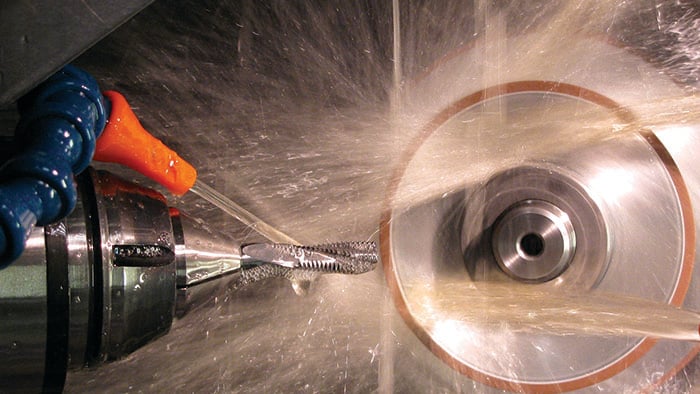2 min read
Process improvement tasks and objectives
There are many reasons why a company may pursue continuous improvement projects: teams may be tasked with identifying...
By: MITGI on Sep 15, 2022 11:30:00 AM

Perhaps the best way to optimize your CNC performance is to use tools custom made for the operation and material you’re cutting. A custom tool can perform dramatically better than a standard tool in almost every scenario.
Think custom cutting tools are too costly? It’s possible the reverse is true. In many cases, a custom tool may last longer and deliver long-term efficiencies. While the per tool cost of a custom may be more expensive than the standard, the savings in cycle time may provide significant overall cost reductions.
Working with a manufacturer who specializes in custom tools is not a luxury. Thanks to advances in tool making technology, smaller orders can still be economically viable for both the toolmaker and the tool user. The lead time for a new custom tool can be as short as a few weeks, and then a reorder of those tools may be even quicker. An order for a modified standard tool can typically be handled within a few days.
When you engage with a reputable custom tool manufacturer, they will work with you to help extend the life of your cutting tools. Here’s how:
The simple step of coating a carbide cutting tool can dramatically extend its life. The right coating will help your tool standup to heat better and resist wear longer. When tools are coated in-house, it’s possible to have short lead times and consistent tool quality. Some of the most common coatings include AlTiN (aluminum titanium nitride), nACo (aluminum titanium nitride with silicon nitride added), TiN (titanium nitride), TiCN (titanium carbon nitride).The coating is determined by the material being cut; ask which coating will deliver the best results for the job.
The strength (and life) of your cutting tools can be increased by experts. Tool designers with experience will be able to help you find the optimal design to achieve your production goals. Depending on the application, tool designers may recommend changing the number of flutes, adding rigidity, adjusting rake or clearance angles to strengthen the cutting edge.
By sharing information about your application and goals, a tool designer can help you to improve performance and deliver optimum results. There’s powerful information to be gained from examining used tools. Through inspection, tool designers can assess whether there are geometry changes that could be made to extend tool life. Reviewing a used tool may shine a light on which edges may need to be reinforced or which angles need to be altered.
The speed, feed rate, and operation all impact tool life. Tool manufacturers have experience addressing these issues and may be able to make suggestions (such as how a machine is operated or how a tool is utilized in getting to the finished product most efficiently).
Implementing a continuous improvement project does not have to be all-consuming. But, to get the best results, you must be ready to do these three things.
You have a lot of flexibility in how you set your goals (i.e. parts per tool, quarterly tool costs, reduced cycle time on a project, fewer quality control issues, etc.), but simply having a target makes the process much better. When working with a tool designer, communicate your goals so they can support and advise you.
Whatever goals you set, be ready to measure progress (or lack of progress) toward them. You will need performance data to validate and confirm that progress.
A permanent improvement may not happen with the first iteration of your custom tool. However, if you are able to measure results and share those with your tool manufacturer, they should have the expertise to help diagnose, address, and solve challenges between you and your goals.
MITGI is ready to help you and your team extend tool life, increase tool performance, and identify continuous improvement options.
Aug 20, 2025by MITGI
There are many reasons why a company may pursue continuous improvement projects: teams may be tasked with identifying...
Aug 13, 2025by MITGI
In many industries that require precision machining, burrs left behind during manufacturing can get in the way of the...
Mar 31, 2025by MITGI
For long-running product lines with well-established cutting tool usage, blanket orders are an easy way to ensure that...